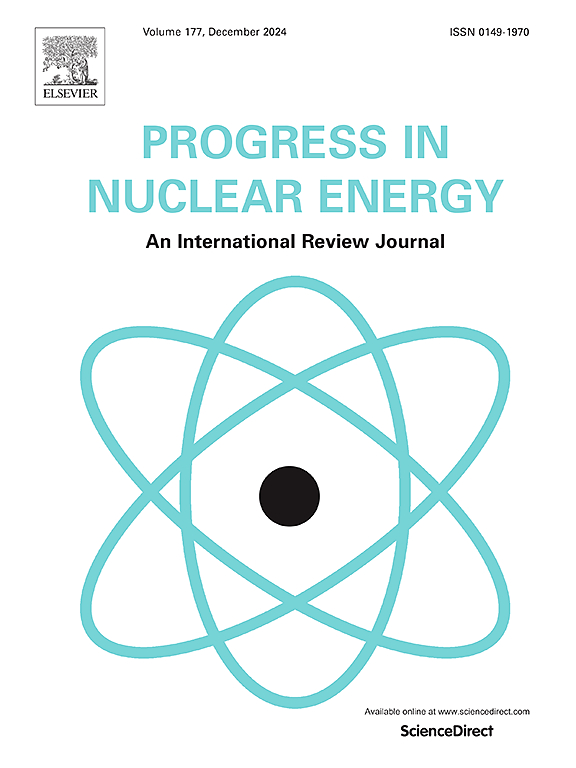基于核心核设计软件包TORCH的耗损计算方法研究
IF 3.3
3区 工程技术
Q1 NUCLEAR SCIENCE & TECHNOLOGY
引用次数: 0
摘要
在反应堆物理设计计算的两步法中,耗尽计算是保证精度和效率的重要模块之一。从微观耗竭和宏观耗竭两个方面对耗竭方法进行了研究。这些研究在TORCH软件包中实现,并使用秦山核电站、大亚湾核电站和福清核电站的实测数据进行验证。临界硼浓度和功率峰因子的数值结果表明,预测校正法、改进预测校正法和对数线性插值法的计算精度在微耗竭法中逐渐提高,而宏观耗竭法的临界硼浓度被低估了20 ppm。结果表明,这些方法具有合理的偏差,可为损耗计算提供新的选择。本文章由计算机程序翻译,如有差异,请以英文原文为准。
Research of the depletion calculation method based on the core nuclear design software package TORCH
In the two-step method of reactor physics design calculation, depletion calculation is one of the most important modules for accuracy and efficiency. The depletion method has been researched in two aspects, including the micro-depletion and the macro-depletion. These researches were implemented in the TORCH software package and validated with actual measured data from Qinshan, Daya bay and Fuqing nuclear power plants. Numerical results of critical boron concentration and power peaking factor show that the calculation accuracy of predictor-corrector method, improved predictor-corrector method and logarithmic linear interpolation method is gradually improved in micro-depletion method and the critical boron concentration is underestimated by 20 ppm in macro-depletion method. All results show reasonable deviations and new options for the depletion calculation can be provided in these methods.
求助全文
通过发布文献求助,成功后即可免费获取论文全文。
去求助
来源期刊

Progress in Nuclear Energy
工程技术-核科学技术
CiteScore
5.30
自引率
14.80%
发文量
331
审稿时长
3.5 months
期刊介绍:
Progress in Nuclear Energy is an international review journal covering all aspects of nuclear science and engineering. In keeping with the maturity of nuclear power, articles on safety, siting and environmental problems are encouraged, as are those associated with economics and fuel management. However, basic physics and engineering will remain an important aspect of the editorial policy. Articles published are either of a review nature or present new material in more depth. They are aimed at researchers and technically-oriented managers working in the nuclear energy field.
Please note the following:
1) PNE seeks high quality research papers which are medium to long in length. Short research papers should be submitted to the journal Annals in Nuclear Energy.
2) PNE reserves the right to reject papers which are based solely on routine application of computer codes used to produce reactor designs or explain existing reactor phenomena. Such papers, although worthy, are best left as laboratory reports whereas Progress in Nuclear Energy seeks papers of originality, which are archival in nature, in the fields of mathematical and experimental nuclear technology, including fission, fusion (blanket physics, radiation damage), safety, materials aspects, economics, etc.
3) Review papers, which may occasionally be invited, are particularly sought by the journal in these fields.
 求助内容:
求助内容: 应助结果提醒方式:
应助结果提醒方式:


